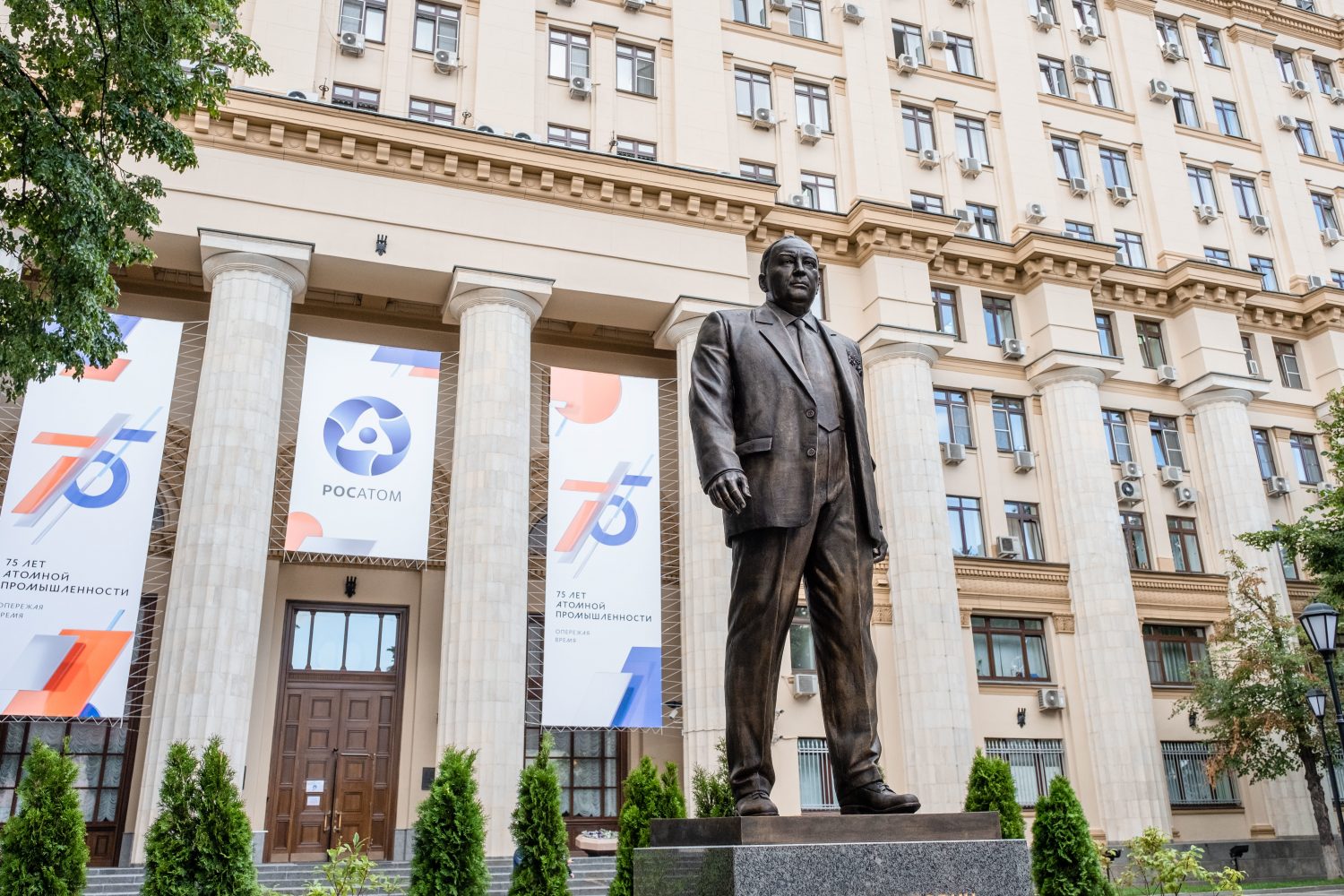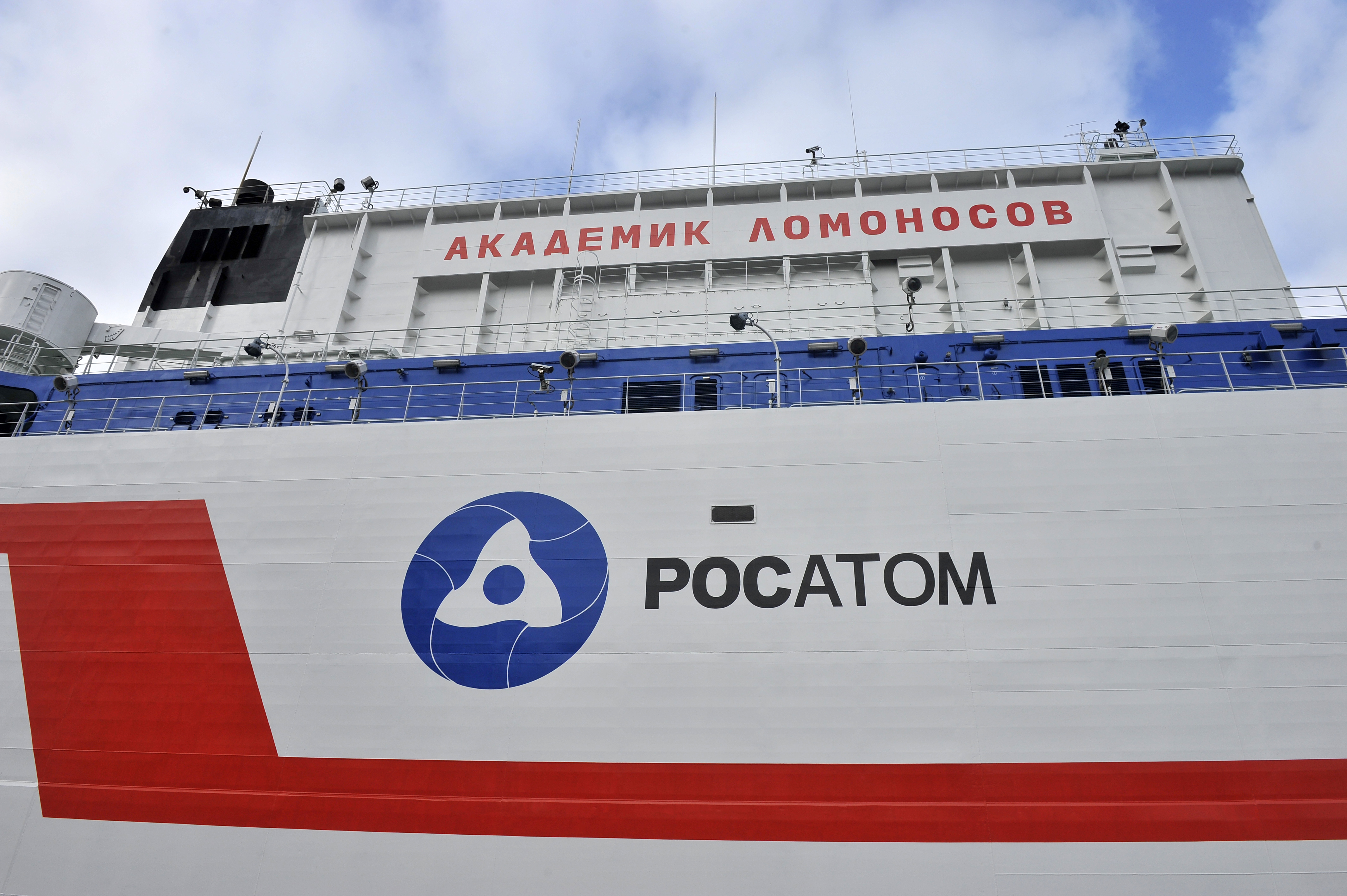
Rosatom Turns 75
back to contentsSeventy-five years ago, on August 20, 1945, the USSR State Defense Committee established a special commission with a mandate to develop nuclear weapons and achieve nuclear parity between the USSR and the USA. This day is considered to be the birthday of the national nuclear industry.
The world’s first nuclear power plant was put into operation in the USSR. Brought online on June 27, 1954, the Obninsk NPP had a capacity of only 5 MW. It generated power safely for 48 years, 18 year more than designed. The plant was shut down in April 2002. At present, Russia has a number of one-of-a-kind nuclear stations. The Beloyarsk NPP operates the world’s only commercial fast neutron reactors; the world’s only floating nuclear station generates power in Chukotka, and the Bilibino NPP is the world’s only plant built in the permafrost. What is more, Russia is a global leader by the number of research reactors produced (over 20 % of the global research reactor fleet).
The Soviet Union also built the world’s first nuclear icebreaker Lenin. Today, Rosatom has the world’s only nuclear ice-breaking fleet. It consists of four nuclear icebreakers (Vaygach, Taymyr, Yamal and 50 Let Pobedy) and the world’s only nuclear lighter Sevmorput. More nuclear-powered vessels are coming soon. The icebreaker Arktika, the first in a series, has completed its sea trials; two more icebreakers of the same series, Sibir and Ural, are under construction; the keel of the fourth vessel, Yakutia, was laid in late May. Construction of the fifth icebreaker will begin soon. This series will be followed by three super-heavy Project 10501 icebreakers.
What Rosatom does
The Russian nuclear industry has been a leader in nuclear technology and services since its early days. Since the very beginning, Rosatom has offered its customers end-to-end nuclear energy solutions. The Russian nuclear corporation provides engineering, procurement and construction services for nuclear power plants, supplies them with nuclear fuel throughout their life span, provides maintenance, repair and upgrade services, trains nuclear staff, decommissions nuclear facilities, and is engaged in spent fuel management.
Apart from traditional nuclear markets, Rosatom, as a research and technology leader, seeks to enter new high-tech markets. The key segments are wind generation, composite materials, additive manufacturing, nuclear medicine, cargo transportation on the Northern Sea Route, waste management, software, and laser technology. Rosatom participates in complex international research projects.
Rosatom is also a party to international treaties on peaceful uses of nuclear energy and nuclear non-proliferation, a reputable member of international organizations and expert panels dealing with nuclear energy and nuclear industry matters.
Working for the future
Rosatom is the only company in the world to work towards the closed nuclear fuel cycle, which will make nuclear almost a renewable source of energy. Rosatom is gradually loading its BN‑800 fast neutron reactor with mixed oxide (MOX) fuel and plans to fully switch over to MOX fuel in 2022. This fuel consists of uranium and plutonium oxides obtained from wastes of other fuel fabrication stages. Plutonium oxide is extracted from irradiated fuel of thermal reactors, while uranium oxide is obtained, as an option, from depleted uranium left over after enrichment. Simultaneously, Rosatom is working on the Proryv (Breakthrough) Project, building a lead-cooled fast reactor BREST with a fabrication/refabrication unit for mixed uranium-plutonium nitride (MUPN) fuel.
Rosatom also takes part in the ITER project, which is intended to demonstrate the possibility of using thermonuclear synthesis in commercial applications, such as energy production.

Another focus of the future energy industry is research into applications of hydrogen as a fuel. Nuclear power plant can produce hydrogen by water electrolysis, the process considered the most eco-friendly. Since nuclear power plants, like solar and wind farms, do not generate greenhouse gas emissions, hydrogen produced with nuclear energy is the cleanest in term of environment protection. Rosatom plans to use hydrogen to fuel trains on the island of Sakhalin.
In the non-energy segment, Rosatom supervises the development of quantum processors using several promising technologies, including superconductors, ions and cold atoms. Quantum processors need to make complex calculations in material science, biology, pharmacology and other industries.
Nuclear technology for people
People benefit from Rosatom’s core activities, starting with construction of nuclear power plants.
As the Akademik Lomonosov floating nuclear power plant was commissioned and brought online, Rosatom took the lead in construction of small modular reactors (SMRs). Akademik Lomonosov is the first and the only SMR put into operation in the world in the 21st century. It already supplies heat and power to the city of Pevek in Russia’s most northeastern region and will soon replace the old coal-fired Chaun thermal power plant polluting the environment. Later Akademik Lomonosov will also begin supplying electric power to Bilibino, another town in Chukotka.
Production of carbon-free energy at a stable price is not the only application of nuclear technology. As the coronavirus pandemic broke out, the use of ionizing radiation to sterilize expendables and medical equipment came to the fore. By mid-September, Rosatom sterilized nearly 40 million face masks and over a million of medical containers for COVID‑19 tests.
Rosatom is also a global leader in the production of medical isotopes for diagnostic and treatment purposes. Diagnostic isotopes are used to detect damaged cell clusters (for example, in patients with cancer), while treatment isotopes serve to target and destroy such clusters without affecting healthy cells.
A nuclear science and technology center (NSTC) with a research reactor is one of Rosatom’s packaged solutions. A country that builds an NSTC would have a compact multi-purpose facility capable of fabricating isotopes for national medicine, sterilizing food and medicinal products, conducting research and training students and staff.

Rosatom also strives to strengthen its position on the global composites market. The Russian nuclear corporation is a major producer of composite materials and products. Composites are used to reinforce power transmission towers, manufacture aircraft parts, sports equipment, implants and many other things. Rosatom plans to go global. According to its estimates, the carbon fiber market will grow by 10 % globally and by more than 15 % in Russia over the period until 2030.
Wind generation is another focus area of the national nuclear corporation. This June, Rosatom put a 150 MW wind farm into operation in Russia’s southern region of Adygea. Another large wind farm with a capacity of 210 MW will be built in the Kochubeevsky District of the Stavropol Krai. The construction started in October 2019. In the last three months, Rosatom obtained a construction permit for another three wind farms in Southwest Russia — 60 MW Karmalinovskaya Wind Farm and 120 MW Bondarevskaya Wind Farm in the Stavropol Krai and 120 MW Marchenkovskaya Wind Farm in the Rostov Region.
Rosatom expects its overarching strategic goals to increase its share in international markets and increase revenue in the conventional business segments, such as construction and maintenance of nuclear power plants, conversion and enrichment services, sales of nuclear fuel, wellbeing products based on nuclear technology, and medical isotopes. One more goal is to enter international markets with new products, including small modular reactors and composite materials.
Rosatom in facts and figures
Rosatom is a global leader in terms of power units constructed abroad (36 units in 12 countries).
Rosatom is a leader in uranium enrichment (38 % of the global market).
Rosatom ranks second by uranium mined (14 % of the global market).
Rosatom ranks second in terms of uranium reserves.
Rosatom holds 16 % of the global nuclear fuel market.
More than 20 research reactors have been built with Russia’s support or to Russian designs.
Photo: Rosatom headquarters in Moscow




